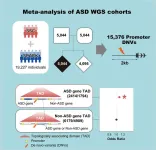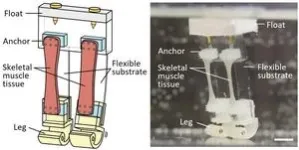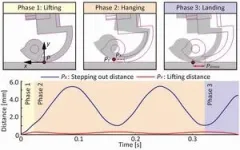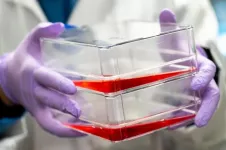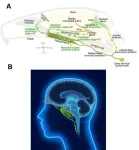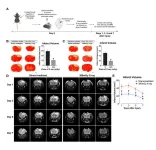(Press-News.org) Researchers in the RIKEN Center for Brain Science (CBS) examined the genetics of autism spectrum disorder (ASD) by analyzing mutations in the genomes of individuals and their families. They discovered that a special kind of genetic mutation works differently from typical mutations in how it contributes to the condition. In essence, because of the three-dimensional structure of the genome, mutations are able to affect neighboring genes that are linked to ASD, thus explaining why ASD can occur even without direct mutations to ASD-related genes. This study appeared in the scientific journal Cell Genomics on January 26.
ASD is a group of conditions characterized in part by repetitive behaviors and difficulties in social interaction. Although it runs in families, the genetics of its heritability are complex and remain only partially understood. Studies have shown that the high degree of heritability cannot be explained simply by looking at the part of the genome that codes for proteins. Rather, the answer could lie in the non-coding regions of the genome, particularly in promoters, the parts of the genome that ultimately control whether or not the proteins are actually produced. The team led by Atsushi Takata at RIKEN CBS examined “de novo” gene variants—new mutations that are not inherited from one’s parents—in these parts of the genome.
The researchers analyzed an extensive dataset of over 5,000 families, making this one of the world’s largest genome-wide studies of ASD to date. They focused on TADs—three-dimensional structures in the genome that allow interactions between different nearby genes and their regulatory elements. They found that de novo mutations in promoters heightened the risk of ASD only when the promoters were located in TADs that contained ASD-related genes. Because they are nearby and in the same TAD, these de novo mutations can affect the expression of ASD-related genes. In this way, the new study explains why mutations can increase the risk of ASD even when they aren’t located in protein-coding regions or in the promotors that directly control the expression of ASD-related genes.
“Our most important discovery was that de novo mutations in promoter regions of TADs containing known ASD genes are associated with ASD risk, and this is likely mediated through interactions in the three-dimensional structure of the genome,” says Takata.
To confirm this, the researchers edited the DNA of stem cells using the CRISPR/Cas9 system, making mutations in specific promoters. As expected, they observed that a single genetic change in a promotor caused alterations in an ASD-associated gene within the same TAD. Because numerous genes linked to ASD and neurodevelopment were also affected in the mutant stem cells, Takata likens the process to a genomic “butterfly effect” in which a single mutation dysregulates disease-associated genes that are scattered in distant regions of the genome.
Takata believes that this finding has implications for the development of new diagnostic and therapeutic strategies. “At the very least, when assessing an individual’s risk for ASD, we now know that we need to look beyond ASD-related genes when doing genetic risk assessment, and focus on whole TADs that contain ASD-related genes,” explains Takata. “Further, an intervention that corrects aberrant promoter-enhancer interactions caused by a promotor mutation may also have therapeutic effects on ASD.”
Further research involving more families and patients is crucial for better understanding ASD’s genetic roots. “By expanding our research, we will gain a better understanding of the genetic architecture and biology of ASD, leading to clinical management that enhances the well-being of affected individuals, their families, and society,” says Takata.
END
Genomic “butterfly effect” explains risk for autism spectrum disorder
2024-01-26
ELSE PRESS RELEASES FROM THIS DATE:
Cultivated meat production costs could fall significantly with new cells created at Tufts University
2024-01-26
Cellular agriculture – the production of meat from cells grown in bioreactors rather than harvested from farm animals – is taking leaps in technology that are making it a more viable option for the food industry. One such leap has now been made at the Tufts University Center for Cellular Agriculture (TUCCA), led by David Kaplan, Stern Family Professor of Engineering, in which researchers have created bovine (beef) muscle cells that produce their own growth factors, a step that can significantly cut costs of production.
Growth factors, whether ...
Researchers discover why one type of chemotherapy works best in bladder cancer
2024-01-26
Tisch Cancer Institute researchers discovered that a certain type of chemotherapy improves the immune system’s ability to fight off bladder cancer, particularly when combined with immunotherapy, according to a study published in Cell Reports Medicine in January.
These findings may explain why the approach, cisplatin chemotherapy, can lead to cure in a small subset of patients with metastatic, or advanced, bladder cancer. Researchers also believe that their findings could explain why clinical trials combining another type of chemotherapy, carboplatin-based chemo, with immunotherapy have not been ...
Emergency contraception related ER visits dropped significantly over 14 year period
2024-01-26
Following federal approval for over the counter emergency contraception in 2006, emergency departments across the U.S. saw dramatic decreases in related visits and medical charges, a new study suggests.
Emergency room visits related to emergency contraception fell by 96 %, from 17,019 to 659, while total related hospital expenses decreased by $7.2 million – from $7.6 million to $385,946 – between 2006 and 2020. The most notable decrease was between 2006-2007 for people primarily seen for emergency contraception.
The Michigan Medicine led findings appear in JAMA Network ...
Job flows into and out of health care before and after the pandemic
2024-01-26
About The Study: The results of this study of approximately 18 million health care industry employees suggest a substantial and persistent increase in health care workforce turnover after the pandemic, which may have long-lasting implications for workers’ willingness to remain in health care jobs. Policymakers and health care organizations may need to act to prevent further losses of experienced staff.
Authors: Karen Shen, Ph.D., of the Johns Hopkins Bloomberg School of Public Health in Baltimore, is the corresponding ...
Incidence of fit test failure during N95 respirator reuse and extended use
2024-01-26
About The Study: In this study of 824 N95s used by 412 emergency department health care workers practicing N95 reuse, fit failure occurred in 38.7% of masks after one shift. Trifold N95s had higher incidence of fit failure compared with dome N95s. These results may inform pandemic preparedness, specifically policies related to N95 selection and reuse practices.
Authors: Ralph C. Wang, M.D., M.A.S., of the University of California, San Francisco, is the corresponding author.
To access the embargoed study: Visit our For The Media website at this link https://media.jamanetwork.com/
(doi:10.1001/jamanetworkopen.2023.53631)
Editor’s ...
Clinical risk and outpatient therapy utilization for COVID-19 in the Medicare population
2024-01-26
About The Study: In this study of patients enrolled in Medicare in 2022, those at the highest risk for severe COVID-19 infection received COVID-19 therapy less often than those with the least risk. Disparities in therapy access were found by patient age, race and ethnicity, Medicaid eligibility, and nursing home residence.
Authors: Michael L. Barnett, M.D., of the Harvard T.H. Chan School of Public Health in Boston, is the corresponding author.
To access the embargoed study: Visit our For The Media website at this link https://media.jamanetwork.com/
(doi:10.1001/jamahealthforum.2023.5044)
Editor’s ...
Brain drain - nasopharyngeal lymphatics found to be crucial for cerebrospinal fluid outflow
2024-01-26
In a groundbreaking study published in Nature, South Korean researchers led by Director KOH Gou Young of the Center for Vascular Research within the Institute for Basic Science (IBS) have uncovered a distinctive network of lymphatic vessels at the back of the nose that plays a critical role in draining cerebrospinal fluid (CSF) from the brain. The study, sheds light on a previously unknown route for CSF outflow, potentially unlocking new avenues for understanding and treating neurodegenerative conditions.
In our brains, ...
CityU neuroscientists uncover the therapeutic potential of low-dose ionizing radiation for traumatic brain injury and ischemic stroke
2024-01-26
Traumatic brain injury (TBI) and ischemic stroke are major public health concerns and leading causes of death and disability worldwide. A research team led by City University of Hong Kong (CityU) neuroscientists recently discovered that low-dose ionizing radiation (LDIR), such as X-ray irradiation, can reduce lesion size and reverse motor deficits in TBI and ischemic stroke mice, demonstrating that LDIR may be a promising therapeutic strategy for TBI and stroke patients.
Nearly half of TBI and stroke survivors experience lifelong motor impairment and disability. “Usually, secondary brain damage worsens over time after primary ...
Alliance for Clinical Trials in Oncology study shows positive results for patients with muscle-invasive urothelial carcinoma
2024-01-26
Patients with muscle-invasive urothelial cancer and a high risk of recurrence after surgery may have a new treatment option. The Alliance for Clinical Trials in Oncology today announced positive results from the phase III AMBASSADOR (A031501) trial for the adjuvant treatment of patients with localized muscle-invasive urothelial carcinoma (MIUC) and locally advanced urothelial carcinoma. Late-breaking data from the trial are being presented during an oral abstract session at the 2024 American Society of Clinical ...
Neural network enables objective assessment of breast symmetry
2024-01-26
Waltham — January 25, 2024 — A newly developed neural network is highly accurate in identifying key landmarks important in breast surgery – opening the potential for objective assessment of breast symmetry, suggests a study in the February issue of Plastic and Reconstructive Surgery®, the official medical journal of the American Society of Plastic Surgeons (ASPS). The journal is published in the Lippincott portfolio by Wolters Kluwer.
"Neural networks and machine learning have the potential to improve evaluation of breast symmetry in reconstructive ...
